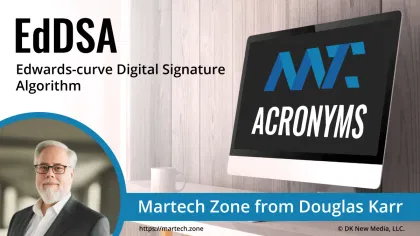EdDSA
EdDSA is the Acronym for Edwards-curve Digital Signature Algorithm

EdDSA has emerged as a powerful and increasingly popular method for creating digital signatures. Named after Harold Edwards for his work on a particular class of elliptic curves, EdDSA represents a significant advancement in public-key cryptography, offering a blend of high security, efficiency, and simplicity.
To appreciate EdDSA, it’s crucial to understand the context of digital signatures. In our digital age, where electronic communications often replace face-to-face interactions, a reliable method is paramount to verify the authenticity and integrity of digital messages or documents. Digital signatures serve this purpose, acting as a cryptographic seal of approval that confirms the origin of a message and ensures it hasn’t been tampered with during transmission.
EdDSA builds upon the foundation laid by earlier digital signature algorithms, mainly drawing inspiration from Schnorr signatures and the Elliptic Curve Digital Signature Algorithm (ECDSA). However, EdDSA introduces several innovations that address some of its predecessors’ limitations and potential vulnerabilities.
At its core, EdDSA operates on a specific type of elliptic curve known as a twisted Edwards curve. These curves, introduced by Harold Edwards and further developed by Daniel J. Bernstein and others, make them particularly well-suited for cryptographic operations. The most commonly used variant of EdDSA is Ed25519, which operates on a curve known as Curve25519.
One of EdDSA’s key strengths is its deterministic nature. Unlike other digital signature algorithms (DSA) that rely on random number generation during the signing process, EdDSA generates signatures deterministically. EdDSA will always produce the same signature for a private key and message. This characteristic eliminates potential vulnerabilities associated with poor random number generation, which has been a source of serious security issues in other algorithms.
The signing process in EdDSA involves several steps. First, the algorithm generates a secret scalar from the signer’s private key and the message to be signed. This scalar is then used to compute a point on the elliptic curve. The x-coordinate of this point, combined with a hash of the public key, message, and the computed point, forms the signature. This process ensures that the signature is intrinsically linked to both the message and the signer’s key pair.
Verification of an EdDSA signature is equally elegant. The verifier uses the signer’s public key and the signature to reconstruct the point on the curve. If this reconstruction matches the information in the signature, the signature is considered valid. This process is secure and remarkably efficient, making EdDSA suitable for a wide range of applications, from high-performance server environments to resource-constrained devices.
One of the most significant advantages of EdDSA is its resistance to several types of attacks that have plagued other signature algorithms. For instance, EdDSA is naturally protected against side-channel attacks, which attempt to extract secret information by analyzing the physical implementation of a cryptographic system (such as power consumption or electromagnetic emissions). This resistance is partly due to EdDSA’s constant-time operations, which make it difficult for attackers to glean information from the timing of cryptographic computations.
EdDSA also offers impressive performance characteristics. It provides fast signature generation and verification, small key and signature sizes, and efficient implementations across various platforms. These qualities make it particularly attractive for use in blockchain technologies, secure messaging applications, and Internet of Things (IoT) devices where computational resources may be limited.
Similar to ECDSA, EdDSA’s security is based on the difficulty of the discrete logarithm problem in elliptic curve groups. However, EdDSA’s careful design choices and the properties of twisted Edwards curves provide additional security assurances. For instance, using complete addition formulas for the curve operations eliminates potential vulnerabilities associated with special cases in point addition.
Despite its many strengths, it’s important to note that like all cryptographic systems, EdDSA’s security depends on the proper implementation of the algorithm. While EdDSA’s design mitigates many common implementation pitfalls, it’s still crucial for developers to use well-vetted, properly implemented cryptographic libraries when working with EdDSA.
As we look to the future, EdDSA appears well-positioned to play a significant role in cryptographic systems. Its combination of security, efficiency, and simplicity makes it an attractive option for various applications. However, like all current public-key cryptographic systems, EdDSA faces potential challenges from the development of quantum computers. While quantum computers of sufficient power to break these systems don’t yet exist, research into post-quantum cryptography is ongoing to develop algorithms that would remain secure even in a post-quantum world.
EdDSA represents a significant advancement in digital signature technology. Its innovative use of twisted Edwards curves, combined with careful design choices, results in a signature scheme that offers high security, excellent performance, and resistance to many common vulnerabilities. As our digital infrastructure grows and evolves, robust and efficient cryptographic tools like EdDSA will play an increasingly crucial role in securing our online interactions and transactions. Understanding EdDSA and its implications is vital for anyone involved in cryptography, cybersecurity, or developing secure digital systems in our interconnected world.